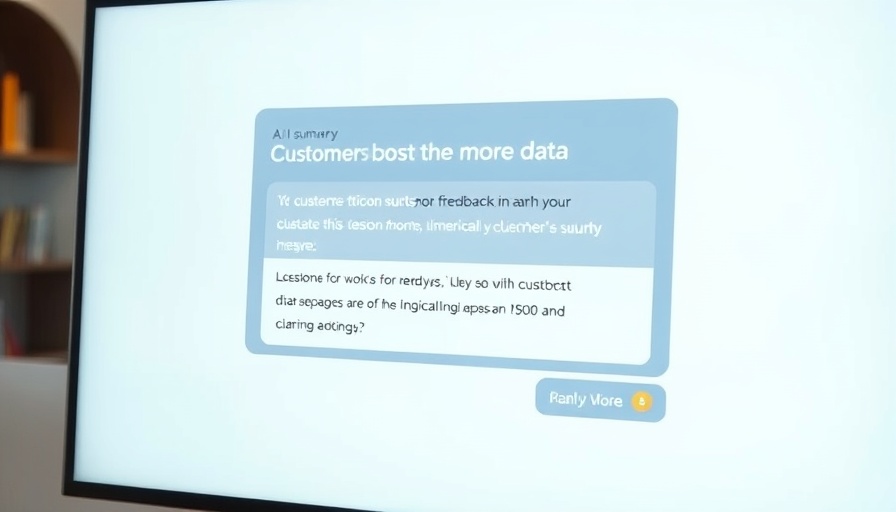
Unlocking Creative Potential with AI Visuals
In today’s fast-paced digital landscape, businesses are constantly searching for new ways to engage customers and stand out from the competition. One innovative solution that has gained traction is utilizing AI image prompts. This tool can aid business owners in generating stunning visuals effortlessly, saving both time and resources while enhancing brand appeal.
Why AI Image Prompts Matter for Business Owners
For business owners generating $2M to $10M in annual revenue, visual storytelling plays a critical role in marketing and communication strategies. AI image prompts empower these leaders to create eye-catching graphics for presentations, marketing materials, and social media content.
With effective visuals, businesses can communicate their values, products, and ideas more clearly, helping to attract potential investors and customers. Plus, leveraging AI tools allows for a higher volume of content creation without compromising quality, a balance that’s crucial for scaling operations.
AI Image Prompts and Effective Workflows
Using AI image prompts can significantly optimize workflows—especially when integrated into project management software tools. These prompts streamline product development processes, allowing teams to collaborate seamlessly. Furthermore, automation tools can enhance operational efficiency by taking over time-consuming tasks like graphic design.
For instance, by assigning image generation tasks to AI software, teams can focus on refining strategies and enhancing customer interactions instead of wrestling with design software. This kind of integrated approach supports a culture of innovation while ensuring that the operational infrastructure remains robust and scalable.
Enhancing Team Collaboration with AI
Collaboration is at the heart of successful business operations. Teams that utilize AI image generation can engage more effortlessly in brainstorming sessions. AI-generated visuals can serve as springboards for discussion, inspiring creativity and directing focus during meetings.
These tools not only bring ideas to life but also allow teams to visualize concepts in real-time, fostering a collaborative environment. Proper integration of these systems ensures that everyone has access to the same resources, making it easy to share ideas and refine collective goals.
Embracing the Future of Visual Storytelling
The future of marketing and project management will undoubtedly involve more sophisticated technological tools. As businesses navigate this new landscape, being adaptable and open to change will be vital for growth. AI image prompts are more than a trend; they are evolving into essential components of modern operational strategies.
According to recent research on visual marketing, brands that incorporate high-quality images tend to see a better engagement rate—up to 65% higher than text-only content. This statistic solidifies the idea that investing in tools that streamline the creation of visuals can yield tangible business benefits.
Ready to Transform Your Business’s Visual Strategy?
If you’re a business owner looking to enhance your brand’s visual appeal, now is the time to consider implementing AI image prompts into your workflow. Streamlining content creation not only boosts efficiency but can also position your business well in the eyes of potential investors and customers. By integrating these tools into your operational strategies, you can ensure that your brand remains relevant in this ever-evolving digital landscape. Don’t wait—start exploring AI image prompts today!
 Add Row
Add Row  Add
Add 



Write A Comment